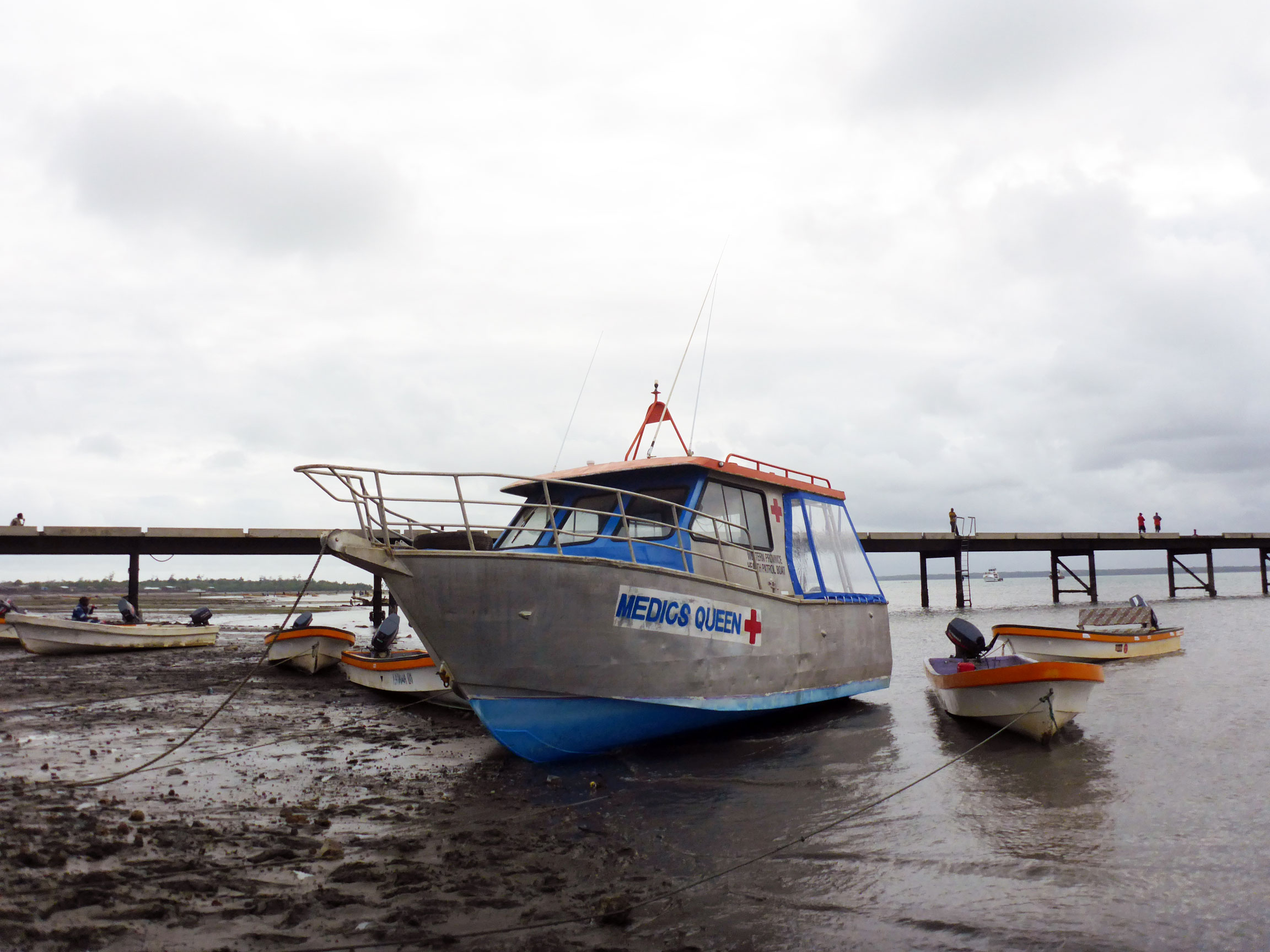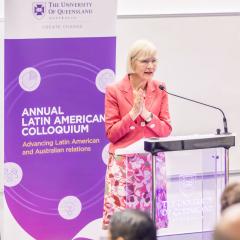UQ researchers engaged with people and communities in the border region between PNG and Australia to develop recommendations that will improve livelihoods in the region.
Between 2016 and 2018, a team of UQ researchers led by Professor Mark Moran visited villages across the South Fly in Papua New Guinea and five islands in Torres Strait. They spoke with the people and officials in these communities with the aim of understanding the socioeconomic impacts of public policy and financial expenditure in the region. This Papua New Guinea borderland is vastly complex, sharing borders with the Torres Strait Islands in Australia, Indonesia, and the Solomon Islands.
Researchers developed a survey instrument to assess community and household characteristics like infrastructure, commodities and prices, health, education, connectivity, livelihoods, cross-border interactions, sanitation, and access to water. The survey instrument was also equipped with components to allow for the measurement of the level of poverty in the South Fly region via the Multidimensional Poverty Index (MPI).
Researchers documented extensive qualitative data from the people living in the border region, recording the lived experiences of those affected by the border and their thoughts on what changes they would like to see to improve their lives.
Life in the South Fly
“The South Fly region is one of the most disadvantaged in Papua New Guinea and the world,” Professor Moran said.
“The MPI calculated for the South Fly sits among the highest globally, revealing that this region is experiencing acute poverty.”
“Infrastructure in the South Fly villages we visited is inadequate. Villagers rely on water tanks, which are often poorly maintained, or are forced to walk long distances to retrieve fresh water; transport by dinghy is extremely expensive; there is no electricity; the few health posts that exist are often ill-equipped and unmanned, and students often need to travel long distances to get to a primary school,” Professor Moran said, “Houses are made of natural materials, and are not mosquito-proof. There is limited access to markets and negligible employment opportunities close to home.”
But researchers found that despite this disadvantage, the people do enjoy high levels of social capital within their communities. And despite the vulnerability to drought and other shocks, their reliance on subsistence foods generally provides them with sufficient food and daily exercise.
Independence and asymmetries
The close pre-colonial relationships between people in the South Fly and Torres Strait Islands, which typically fostered mutual benefits for both parties, were transformed when PNG gained independence in 1975. Since then, the benefits coming to Torres Strait Islanders along with their Australian citizenship have steadily increased, lifting their living standards.
Meanwhile, the situation in the South Fly has deteriorated: the people have received limited support from the PNG Government and environmental damage due to irresponsible mining practices has damaged the marine environment on which they depend.
Professor Moran says that asymmetries on the PNG side of the border have deepened further as the management of the Torres Strait Treaty has gradually hardened.
The Torres Strait Treaty
The Torres Strait Treaty determined that fourteen villages in the South Fly were allowed relatively unrestricted access across the border for traditional activities, which created another divide: those residing in treaty villagers, who benefit from the Treaty, and those in non-treaty villages, who were left without access to the benefits of legally crossing the border.
Many people in the South Fly depend on a productive cross-border relationship with the Torres Strait. South Fly treaty villagers travel across to border to work as domestic help, access emergency health services, engage in traditional activities, and sell arts, crafts and other goods.
“The unique border context drives ‘seeking behaviours’ in South Fly villagers, who must carve out a livelihood in the border region, often by crossing or trading across the border,” Professor Moran said, “Many non-treaty villagers sell their produce and crafts to treaty villagers, who then on-sell those products, or their own, into the Torres Strait Islands.”
“The flow of goods across the border is often stifled by the vague and variably enforced regulations in place, which only allow for ’traditional’ activities across the border,” Professor Moran said.
“Work for PNG nationals in the Torres Strait is especially fraught. Many are paid with food, or only meagre sums, so that their activities qualify as traditional under the Treaty.”
Although people in the Torres Strait also experience disadvantage relative to non-Indigenous Australia, there is a sharp divide when looking across the border into PNG. Researchers found that household incomes in the South Fly are significantly lower: while Torres Strait Islanders reliably earn their income from work or welfare payments, South Fly residents’ income is intermittent and diverse, from opportunistically selling crafts, gardening, hunting, fishing and whatever remittances their relatives can manage.
Healthcare at the border
“When transport can be organised, patients make their own way to the hospital in Daru, where over-crowding due to the city’s facilities has cultivated a multi-drug resistant tuberculosis (MDR TB) hotspot,” Professor Moran said.
 Health services in Australia are markedly more sophisticated than those offered across the border. Many South Fly residents access them for emergency care, putting pressure on Queensland Health clinics on the outer Torres Strait Islands. Queensland Health is funded by the Australian Government for the costs of treating PNG nationals crossing the border.
Health services in Australia are markedly more sophisticated than those offered across the border. Many South Fly residents access them for emergency care, putting pressure on Queensland Health clinics on the outer Torres Strait Islands. Queensland Health is funded by the Australian Government for the costs of treating PNG nationals crossing the border.
“Queensland Health sensibly draws a line at the border, but there is an opportunity for it to be also working developmentally as a part of the PNG aid program, building the capability of the health system in PNG’s Western Province,” Professor Moran said.
The precarious health context highlights the need for aid programs to take a population health approach that encompasses both sides of the border.
Building stronger communities
The research team will use the data they have gathered from their analysis and cross-border interviews to develop recommendations for how and where to disburse Australian aid in a way that will meaningfully build capacity and improve the health, wellbeing and financial outcomes of borderland communities. Key areas of consideration include labour mobility, facilitating access to remittances, improved management of marine natural resources, and reduction of dependence on the Treaty for cross-border trade by creating legal exports via Cairns.
The project findings and recommendations will be published by Melbourne University Press in 2020.
Research funding
Australian Research Council (ARC) Discovery Grant



